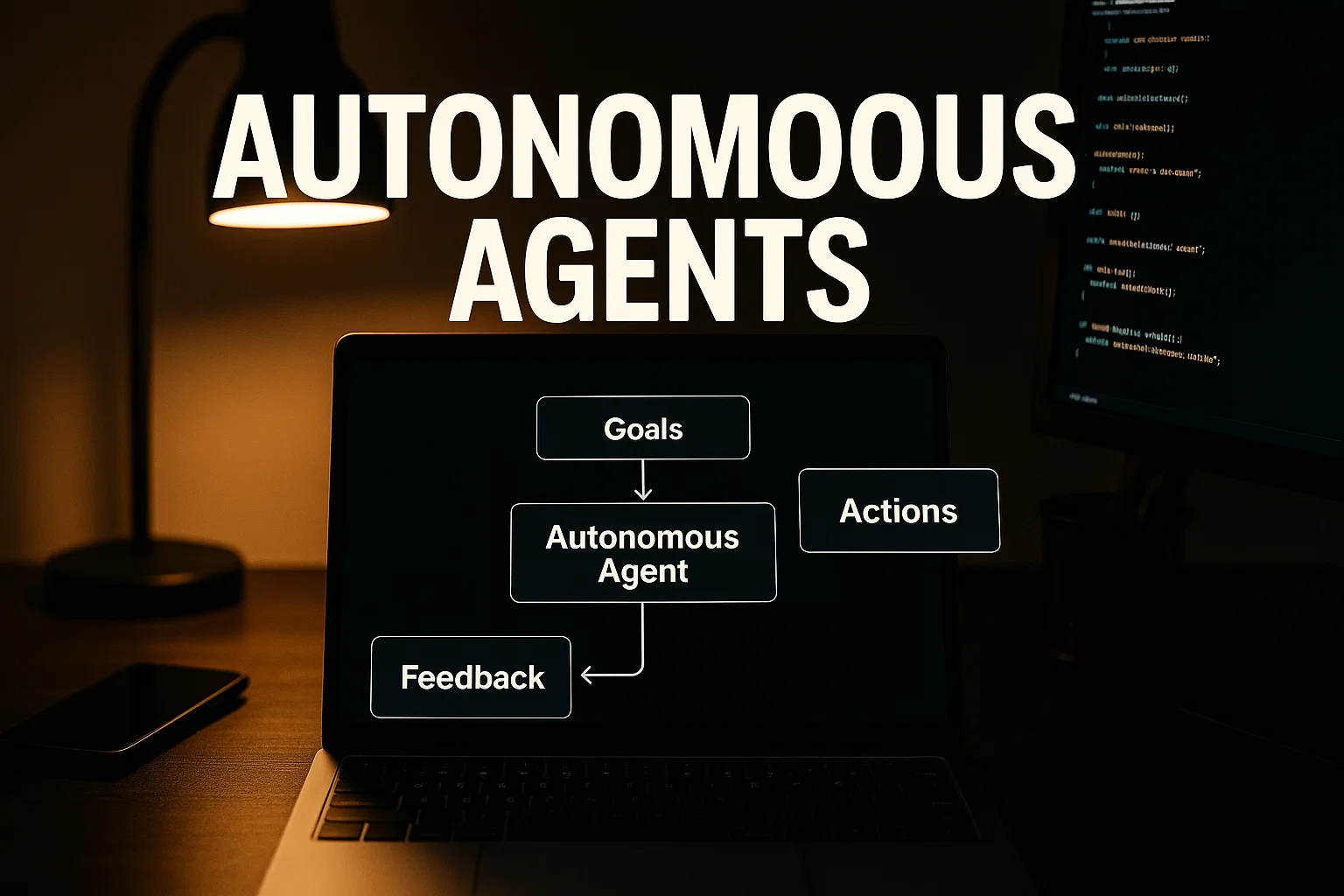AI Governance means policies, roles, and processes that ensure AI systems are safe, transparent, and accountable, use a prioritized inventory, adopt crypto-agility for data protection, and roll out governance with staged pilots and clear audit trails.
Introduction
ai governance is the backbone of trustworthy AI, and this guide is informational with practical, step-by-step advice so you can fix on-page issues like low CTR titles and weak meta while building real governance capability. You’ll get definitions, a hands-on rollout plan, code you can copy, tool recommendations, and a compliance checklist. I’ll mention related entities like model risk management and AI ethics frameworks early, because they shape how governance is designed and measured.
In my experience, starting small with a clear inventory and a pilot policy speeds buy-in and reduces risk, so I’ll show you how to get traction fast, while making content and metadata that actually converts.
What ai governance is and why it matters
ai governance is the set of policies, roles, processes, and technical controls that ensure AI systems behave as intended, respect rights, and meet legal and ethical obligations. It covers the full lifecycle, from design and data, through model development and deployment, to monitoring and retirement.
Core components
- Policy and standards: rules for acceptable use, data handling, and fairness.
- Roles and accountability: appointed owners, reviewers, and escalation paths.
- Technical controls: versioning, access controls, monitoring, and explainability tools.
- Risk management: assessment, mitigation, and incident response plans.
Why it matters for your product and SEO
Governance reduces operational and reputational risk, improves model quality, and often becomes a requirement for partnerships or regulated environments. From an SEO and CTR perspective, clear governance messaging increases trust, which raises clickthrough and conversion. People click when they see clear accountability and signals that data is handled responsibly.
Related concepts
Model risk management, algorithmic accountability, and privacy by design all feed into ai governance. Treat governance as a product feature, not only a checklist.
Define a practical ai governance framework
A lightweight, actionable framework helps you move from theory to practice fast. Use these subcomponents as your skeleton.
Policy first, then tooling
Start with short, enforceable policies that define allowed uses, data sources, and user consent requirements. Pair policies with concrete controls, such as approved data repositories and model registries.
Governance roles and decision gates
Assign a model owner, a reviewer, and an escalation channel. Create decision gates, for example: design review, pre-production approval, and post-deployment monitoring.
Metrics and acceptance criteria
Define success and guardrail metrics up front, such as fairness thresholds, precision/recall bounds, latency limits, and user complaint rates. Make these measurable and tied to release criteria.
How to implement ai governance — step-by-step
Follow this hands-on sequence to build and scale governance across teams.
- Inventory and prioritize. Map models, data sources, and where predictions are used. Rank by impact and exposure.
- Write minimal policies. Draft one-page policies per domain, for example model use, data, and third-party integrations.
- Create a governance pipeline. Integrate checks into CI/CD: automated tests for data quality, model drift, and privacy.
- Run hybrid pilots. Start with a single high-impact model, implement controls, and collect metrics.
- Scale with templates. Create reusable review templates, checklists, and an approvals workflow.
- Monitor continuously. Deploy observability to catch drift, bias, and anomalies, and require periodic re-approval.
Example workflow code, policy check in Python
# python
# Simple policy check for a model deployment request
# Replace the checks with your real validation functions
def check_policy(model_meta):
"""
Returns True if model passes basic governance checks,
raises ValueError with a short reason otherwise.
"""
try:
if model_meta.get("training_data_source") is None:
raise ValueError("Missing training data source")
if model_meta.get("privacy_risk_score", 0) > 7:
raise ValueError("Privacy risk too high")
if model_meta.get("explainability") is False:
raise ValueError("Explainability requirement not met")
# Add other checks as needed
return True
except Exception as e:
# Minimal error handling, caller should log and act on the reason
raise
# Short explanation: call check_policy before promoting a model to production.
This example shows a minimal gate, include richer checks in production, and log all failures for audit.
Quick operational tip
Automate the most repeatable checks, and reserve human reviews for edge cases and high risk models.
Best practices, recommended tools, pros and cons
Build governance with tools that support policy, automation, and transparency.
Best practices
- Design for auditability, log inputs, outputs, prompt versions, and model versions.
- Adopt crypto-agility and secure secrets handling, because data protection is core to trust.
- Use human-in-the-loop where decisions have high impact on people.
Recommended tools
- Model registry and lineage (for example, a registry service)
- Pros: tracks versions and provenance, helps rollback and audit, Cons: needs integration effort.
- Install/start tip: connect registry to your CI pipeline to register builds automatically.
- Observability and monitoring platform
- Pros: real-time drift and alerting, Cons: can generate noise without good thresholds.
- Install/start tip: tag model outputs with metadata and create targeted alerts for key metrics.
- Policy automation and workflow tools
- Pros: enforces gates and captures approvals, Cons: initial setup and onboarding time.
- Install/start tip: start with a simple approval webhook that blocks deploys until sign-off.
Tool choice guidance
Choose tools that integrate with your stack, support audit logs, and enable role-based access. Avoid coupling governance to a single vendor if portability matters.
Challenges, legal and ethical considerations, troubleshooting
Preparing governance can surface tough tradeoffs, from performance to compliance.
Common challenges
- Balancing speed and safety, teams want velocity but governance introduces friction.
- Interoperability with partners, external systems may not support your control model.
- Technical debt in model versioning makes audits and rollbacks difficult.
Compliance checklist
- Maintain an inventory of models and data sources.
- Log prompts and model versions, plus approvals and reviews.
- Document data retention, consent, and user privacy policies.
- Ensure access controls and secrets management are in place.
- Conduct periodic audits and tabletop exercises, and record results.
Troubleshooting steps
If a model behaves unexpectedly, roll to previous version, replay inputs in a sandbox, and review training data drift. If approvals stall, shorten the policy to minimal required checks and iterate.
Alternatives: for very sensitive functions, prefer human-only decisions or conservative rule-based systems rather than ML models.
Governance guidance stresses that clear, measurable policies and evidence of oversight build public trust in AI systems. (google.com)
Frameworks recommend staged rollouts, monitoring, and human oversight to manage model risk effectively. (nist.gov)
Implementation examples and developer tips
Use these code patterns and snippets to instrument governance events and approvals.
// node
// Simplified event logger for governance actions
const express = require("express");
const app = express();
app.use(express.json());
app.post("/governance-event", (req, res) => {
try {
const { modelId, user, action, reason } = req.body;
// Append minimal event into your audit log, replace with DB/HSM
console.log("GOV_EVENT", { modelId, user, action, reason, ts: Date.now() });
res.status(200).json({ ok: true });
} catch (err) {
console.error("Failed to record event", err);
res.status(500).json({ error: "event failed" });
}
});
app.listen(4000);
Explanation: Log governance actions server-side to an immutable store or append-only log for audits, replace console logs with secure storage in production.
One-line operational tip
Keep governance metadata close to model artifacts so they stay together through CI/CD and deployments.
Conclusion and CTA
ai governance is achievable with a clear inventory, minimal but enforceable policies, and automation that scales. Start with a pilot, use lightweight policy gates, and instrument every decision for auditability. Focus on measurable metrics, human oversight for high-risk flows, and modular tools that let you swap components as needs evolve.
Welcome to Alamcer, a tech-focused platform created to share practical knowledge, free resources, and bot templates. Our goal is to make technology simple, accessible, and useful for everyone. We provide free knowledge articles and guides in technology, offer ready-to-use bot templates for automation and productivity, and deliver insights to help developers, freelancers, and businesses. For custom governance integrations, templates, or development support, contact Alamcer to accelerate your program.
Key takeaways:
- Start with inventory and prioritize by risk.
- Automate simple checks, reserve human review for high risk.
- Log everything for audit and traceability.
- Design for crypto-agility, and keep governance flexible.
Further reading: Google AI principles (google.com), NIST AI Risk Management Framework (nist.gov), OECD AI policy guidance (oecd.org), industry best practices from governance frameworks (moz.com).
FAQs
What is ai governance?
ai governance is the set of policies, roles, and technical controls that ensure AI systems are safe, accountable, and aligned with legal and ethical norms, covering policy, monitoring, and audits.
Why does my team need ai governance?
You need governance to reduce legal and reputational risk, ensure compliance, and make AI outputs reliable, especially where decisions affect rights, safety, or finances.
How do I start a governance program with limited resources?
Begin with an inventory, a one-page policy for critical systems, and a simple approval gate in your CI pipeline; iterate from there.
Which metrics matter for ai governance?
Track model accuracy, drift, fairness measures, complaint rates, time to detection, and human override frequency to measure governance effectiveness.
Can governance slow down development?
It can, but start with automated checks for low-risk items and human review for high-impact decisions to balance speed and safety.
How should I document governance decisions?
Store prompts, model versions, approval logs, test results, and incident reports in a searchable audit log tied to model artifacts.
ai governance
ai governance is the process and set of controls that make AI systems accountable, auditable, and aligned with policy, including roles, monitoring, and compliance steps.
When should I involve legal and compliance teams?
Involve them early, particularly when models touch personal data, regulated industries, or automated decision making, to ensure policies meet legal obligations.
What tools can help implement ai governance quickly?
Model registries, monitoring platforms, and workflow automation for approvals speed implementation and provide immediate value.
Who should I contact for custom governance solutions?
For templates, integration, or custom governance engineering, reach out to Alamcer for consulting, ready-to-use templates, and development support.
Compliance and disclaimer
This guide is informational and not legal advice. Follow applicable privacy laws, terms of service, and data protection regulations, and consult a legal or compliance professional for jurisdictional guidance when needed.



